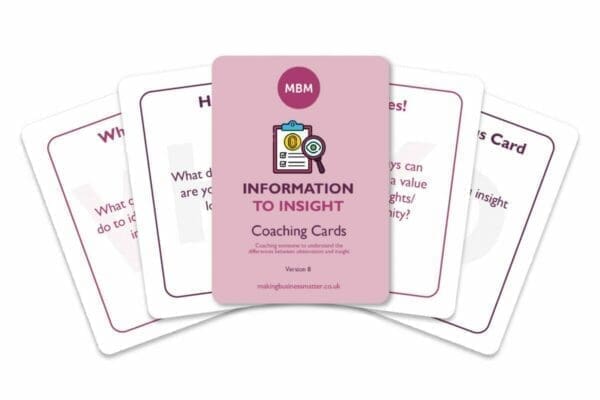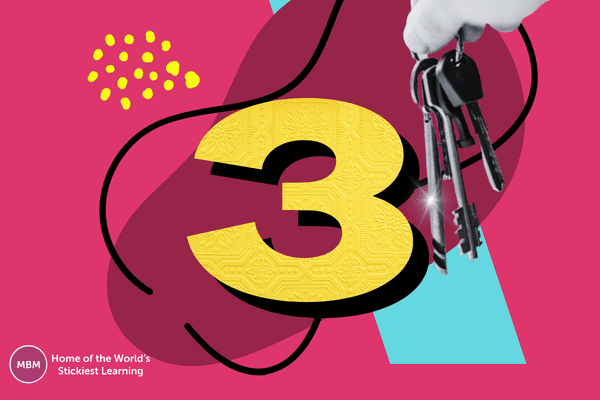Learn to Reach Smarter Choices, And Seriously Raise Your Game
Decision making in business is even more important in the scheme of things, than the choices we make in other areas of our lives. Our personal decisions don’t usually affect that many people. By contrast, our business decisions affect many other lives besides ours and the people close to us. So, they need to result in the best possible outcome.
What is a Decision?
A decision is a course of action we arrive at in a decision making process. We choose it out of several possible alternative options and reach the decision through a series of steps that we take either as individuals or as a group, to determine the best option to meet our needs. Working out our choice between a range of alternatives is an important aspect of decision making, which we’ll explore in this article.

Too Important to Leave to the Boss
No one’s saying leaders and managers shouldn’t make the more straightforward business decisions by themselves. But the more complex the choice is, the more they’re likely to need input from other knowledgeable people. If a leader or manager makes a complex choice without consulting anyone else, it may not result in the best choice, because they don’t have all the available information. If they’ve been in the job a long time, they might always go for a similar solution, because they know it usually works. Even so, it might not be the best choice this time round.
Why is Decision Making Important in Business?
Decision making is one of the most significant aspects of running a business. Leaders decide the strategic vision for the business, and the steps to achieve it. At the operational level, again, it’s about having the vision, and the steps to realise it.
In marketing, for example, becoming a market leader involves choosing the products or services to offer, how to price them, where to sell them, and how to promote them. Whether it’s at leadership level, or further down the hierarchy, good decision making makes the difference between success and failure.
Strong decision making helps businesses solve problems and grasp opportunities promptly and strengthens the decision makers’ confidence. But when you’re in a leadership position, you’re under considerable pressure.
Sticky Learning ® is 7 times more effective than 1-day training courses. Plus, you will get a Chain of Evidence proving your Return on Investment. Discover soft skills training that changes behaviours long term.

That seems like an emotional choice
Sometimes people in business get emotionally involved in the debate about a resolution. Or they make irrational decisions when they’re stressed. They want to solve the problem urgently and fix it once and for all. That’s all good, but strong choices need to be impartial and devoid of the emotional influences that might make us overlook shortcomings. Such decision making should also be transparent and logical.
A person acts rationally when they have a good reason for what they do, and it’s based on strong evidence. In other words, a decision is a conclusion or resolution reached after giving it due consideration. You’re less likely to think like that if you aren’t feeling calm.
Bring the team on board, and work with them on reaching the resolution
Involve an expert group in decision making, and they’ll arrive at the best solution because they have access to all the information. Let the individuals come up with their ideas, and from there decide with them which ones stand out and will work best.

Improve your data insights with these cards.
>> Information to Insight Coaching Cards <<
What Are the 3 Elements of Decision Making?
In the Western world, people have different ideas about these elements. Our first set of three elements come from the US State of Michigan’s website, michigan.gov:
The 3 Cs of Decision Making:
- Clarify = Clearly identify the resolutions to be made, or the problem to be solved.
- Consider = Think about the possible choices, and what would happen for each one. Also, think about both the positive and negative consequences of each choice.
- Choose = Go for the best one.
Here’s another set of 3 elements. This one comes from Inc. Magazine:
3 Essential Elements of Making Better Decisions:
- Instinct = Your gut reaction to a situation or stimulus. We’ll come back to the importance of instinct and gut reaction later.
- Judgment = Applying the data and your experience to analyse the situation.
- Perspectives = Seeking external expertise that can expand, influence, or change your point of view.
Performance coaching company Full Focus expand on the first two sets of elements we’ve looked at. Their interpretation is particularly worth reading, because decision making can be viewed as a high-brow activity, and these comments are very down to earth.
3 Elements of Effective Decision Making
#1- Information:
Get the facts. Without them, you make bad choices. As you consider the facts, be wary of the data’s limitations and of confirmation bias (CB.) We’ll look at what ‘CB’ is in a moment. Meanwhile, as a decision maker, it’s your job to separate the relevant facts from the irrelevant ones. Another thing to stress here is, it’s tempting to arrange the facts to suit your preconceived ideas. Instead, you need to get all the facts – or as many as you have – on the table before assembling your conclusion.
#2- Counsel:
Get advice. You can’t be good at everything, so face it and invite outside voices into your decision process. There’s nothing more expensive than a bad decision. Add outside perspectives to the facts, and you’re on your way to reaching an effective solution.
#3- Intuition:
Go with your gut. Other people’s data and input won’t get you to certainty on your decision. Look inwards and ask yourself what’s right. Full Focus says making decisions becomes greyer, the further you move up the ladder. Trust your intuition.
Why Do We Need to Know About Confirmation Bias?
The Encyclopaedia Britannica says ‘confirmation bias’ is our tendency to process information by looking for or interpreting, information that’s consistent with our existing beliefs. It’s very easy to do! It’s largely unintentional and results in us ignoring information that’s inconsistent with our beliefs.
Confirmation bias is one of the most common cognitive biases that humans face. Anyone who’s ever been in a decision making meeting knows about all this. Confirmation bias is our natural inclination to search for, favour, and use information that confirms our pre-existing views on a certain topic because it makes us feel secure. As Harvard Business School point out, people give this other names, as well: cherry-picking, my-side bias, or insisting on doing whatever it takes to win an argument.
How to Avoid Confirmation Bias in Your Decision Making
- Ask neutral questions: See the problem and the information you’ve got about the alternative solutions as objectively as you possibly can.
- Play devil’s advocate: Ask the unasked questions.
- Bring a good mix of minds on board: Think about the benefits of diversity in selecting your team members for the conversation.
3 Keys to Faster, Better Decisions

McKinsey offers decision makers who are fed up with slow or below-par results three practices to help improve making decisions, and in their words, convince sceptical business leaders that there’s life after death by committee:
1. Big Bets – Facilitate Productive Debate:
‘Big-bet ‘decisions can be future-shapers for a company and the most important decisions leaders make. Furthermore, they often receive much less scrutiny than they should. But the dynamic in many decision meetings doesn’t help. It’s as if there’s an unspoken understanding, say McKinsey, that the meeting should proceed like a short, three-act play, but without the drama.
2. Cross-cutting Decisions – Understand the Power of Process:
There are many reasons cross-cutting decisions get cross-wired. Leaders may not have visibility on who is – or should be – involved. Silos in the company with separate functions make it fiendishly hard to see how smaller choices aggregate into bigger ones. There may be no decision making process at all, or if there is one, it’s poorly understood.
3. Delegate Decisions – Make Empowerment Real:
Delegated decisions are generally far narrower in scope than big-bet decisions or cross-cutting ones. They are frequent and relatively routine elements of day-to-day management. But given the multiplier effect – the outcome affects the whole company – there’s a lot of value at stake here, and when the company’s approach is flawed, it’s costly.
What Are the 5 Keys of Decision Making?

1. Act in Haste, Repent at Leisure:
When you don’t take time to consider the ramifications, decisions often end up in costly results. The lesson is, where possible, to spend time thinking about your decisions. Weigh the pros and cons first.
2. Seek Wise Counsel:
You’re the boss, but you don’t have to figure everything out by yourself. Take your concerns to someone experienced in dealing with a similar decision, whether it’s about advertising in trade magazines or managing a troubled employee.
3. Learn How to Actively Listen:
In a successful conversation, individuals feel they’re respected, and their contributions are welcomed and appreciated. Listening — genuinely, openly, and actively — conveys trust and promotes understanding.
4. Use Your Emotions:
Scientists have found that without engaging our emotions, we become completely ineffective at making choices. Emotions also impact teamwork. Recent research shows emotional intelligence is one of the strongest predictors of success at work.
5. Count to 10:
We said to act in haste, repent at leisure, but don’t take too long about reaching your decision. Successful people make them quickly; unsuccessful ones reach them slowly. In fact, delayed decision making costs money. Slow decision making can lead to burnout, and leave you vulnerable to competitors.
Want to Reach Decisions Faster? Ask the Experts

Here’s what Kescia D. Gray suggests, writing in Corporate Wellness magazine:
5 Steps to Good Decision Making:
- Step 1: Identify your goal: keep an eye on the prize.
- Step 2: Gather information for weighing your options.
- Step 3: Consider the consequences.
- Step 4: Make your decision.
- Step 5: Evaluate your decision.
The educational consultant Peter Pappas recommends the following on Edteck.com:
7 Steps of Economic Decision Making:
- Define the problem.
- Identify possible alternatives.
- Develop criteria and a ranking system.
- Evaluate the alternatives against the criteria.
- Make your decision.
From there, Pappas recommends two more steps:
- Quantify the steps to realise the decision.
- Determine the opportunity cost of the decision.
Lucid Software Inc, the producers of Lucidchart system software, talk about these:
7 Steps of the Decision Making Process
- Identify the decision.
- Gather the relevant information.
- Identify the alternatives.
- Weigh the evidence.
- Choose among the alternatives.
- Take the necessary action.
- Review your decision.
The Decision-making Process in Action – Ecommerce Recruitment
The decision making process is much the same for leadership at the strategy level and for managers at the operational level. Knowledgehut.com offer this example of the decision making process in action, in recruitment for an e-commerce start-up:
- Establishing objectives: The business is expanding, and you’re hiring for various roles. Firstly, you need to establish which parts of your business you want new people for.
- Identify the decision: What’s the best course of action to recruit the ideal employees?
- Gather appropriate information: With your team, explore the various hiring trends.
- Identify the best recruitment methods: Do this by brainstorming, research, and consultation.
- Weigh the evidence: Consider all your findings to identify which method could be most profitable for your business.
- Choose from the alternatives: Take the insights from the techniques we’ve mentioned, and your gut instinct, and choose the most profitable one for you.
- Go into action: Carry out a search and interview the best candidates.
- Finally, review the decision: Now you’ve hired everyone, review the process to see what you need to change to make the process more efficient.
And Finally: The Characteristics of Decision Making: Have You Got What It Takes?

1. Rational Thinking:
Analyse the options systematically and choose the best course of action based on logic and evidence. Start by identifying your goals and objectives.
2. Process:
Many people view making decisions as a cold, rational process, but as we’ve said, it’s influenced by a variety of factors, both conscious and unconscious. Our emotions play a role in our choices, along with our personal values and beliefs.
3. Selective:
Reaching a resolution involves picking the best options. Many factors influence what gets selected, including the clarity of the options, the relevance of the criteria, and weighing the various factors.
4. Purposive:
Making resolutions effectively is based on specific goals and objectives. It considers the desired outcome of the decision, and the available options, to select the best possible course of action.
5. Positive:
Stay enthusiastic all through the process. This goes hand in hand with…
6. Commitment:
You need the drive to see the decision through, even when it gets tough, and defend your decision to others, even if they don’t agree with you.
7. Evaluation:
Lastly, it’s important to be as objective as possible when evaluating the different options and look at the situation from all angles.
I Need a Hand With All This… Helpful Hints
If you get stuck making decisions, Amy Rigby, writing on the RescueTime blog, advises:
- Ignore your emotions and use pre-set criteria.
- Know when to stop researching, and commit to a decision.
- Delegate the decision-making to someone appropriate.
- Use the 5-second rule to activate the part of your brain that makes intuitive decisions. When you have an instinct to move toward a goal that’s important to you, count down 5, 4, 3, 2, 1, then act immediately.
- Lastly, use the 2-minute rule to be more decisive and finish tasks faster. If you need to look at something twice or think about it over and over again, you’ve wasted your energy.
Now, we hope you’re glad you made the decision to read this article, and that you found it useful. Now go and have a decisive day!




